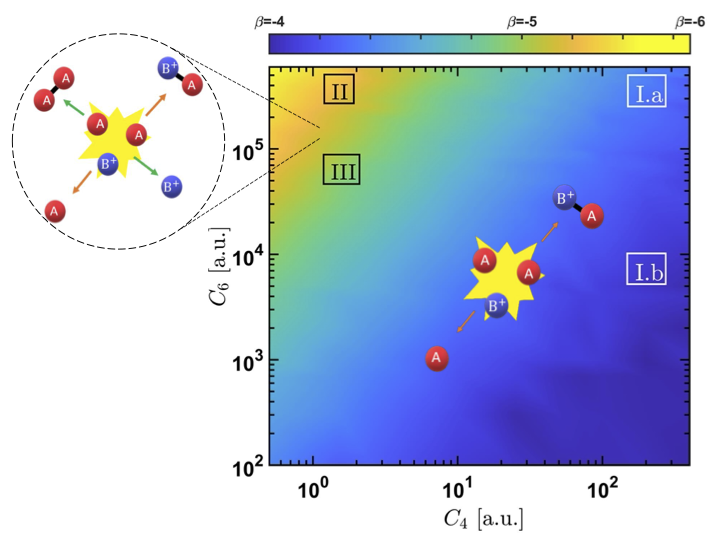Publications highlights
Our work in Nature Chemistry Collisional alignment and molecular rotation control the chemi-ionization of individual conformers of hydroquinone with metastable neon
 The puzzle of chemistry is very complex and vast due to the very different puzzle
pieces shapes one finds and all matching possibilities. However, under very controlled
experimental conditions, it is possible to isolate particular puzzle pieces readily
and to study the matching mechanism, as we show in our work . Our findings, supported
by theoretical simulations, indicate that the atomic arrangement of molecules plays
a critical role in chemical reactions. More surprisingly, we find that the reactants'
atomic arrangement, exactly when they reach the distance of the closest approach,
controls the fate of the reaction (the matching). Moreover, we find that the internal
quantum state of the reactants hinders the effects of atomic arrangements of the reactants,
altering the fate of the reaction, as displayed in the Figure. Hence, our findings
may open new avenues to control complex chemical reactions, and more importantly,
they confirm, once more, the inherent quantal nature of chemical reactions.
The puzzle of chemistry is very complex and vast due to the very different puzzle
pieces shapes one finds and all matching possibilities. However, under very controlled
experimental conditions, it is possible to isolate particular puzzle pieces readily
and to study the matching mechanism, as we show in our work . Our findings, supported
by theoretical simulations, indicate that the atomic arrangement of molecules plays
a critical role in chemical reactions. More surprisingly, we find that the reactants'
atomic arrangement, exactly when they reach the distance of the closest approach,
controls the fate of the reaction (the matching). Moreover, we find that the internal
quantum state of the reactants hinders the effects of atomic arrangements of the reactants,
altering the fate of the reaction, as displayed in the Figure. Hence, our findings
may open new avenues to control complex chemical reactions, and more importantly,
they confirm, once more, the inherent quantal nature of chemical reactions.
Our review in Nature Physics Ultracold Chemistry as a testbed for few-body physics
 Ultracold atoms, molecules and ions provide a unique playground to explore chemistry
at ultracold temperatures. In this Review, we discuss what makes these systems particularly
appealing as controlled quantum systems and the theoretical challenges that their
study poses. We discuss recent progress in the field, focusing on chemical processes
such as bimolecular chemical reactions, three-body recombination, charge transfer
reactions and photochemistry. We emphasize the synergy between theory and experiment,
highlighting the predictive power of theory and future directions in ultracold chemistry
research.
Ultracold atoms, molecules and ions provide a unique playground to explore chemistry
at ultracold temperatures. In this Review, we discuss what makes these systems particularly
appealing as controlled quantum systems and the theoretical challenges that their
study poses. We discuss recent progress in the field, focusing on chemical processes
such as bimolecular chemical reactions, three-body recombination, charge transfer
reactions and photochemistry. We emphasize the synergy between theory and experiment,
highlighting the predictive power of theory and future directions in ultracold chemistry
research.
Front cover in the Journal of Computational Chemistry Py3BR: A software for computing atomic three-body recombination rates
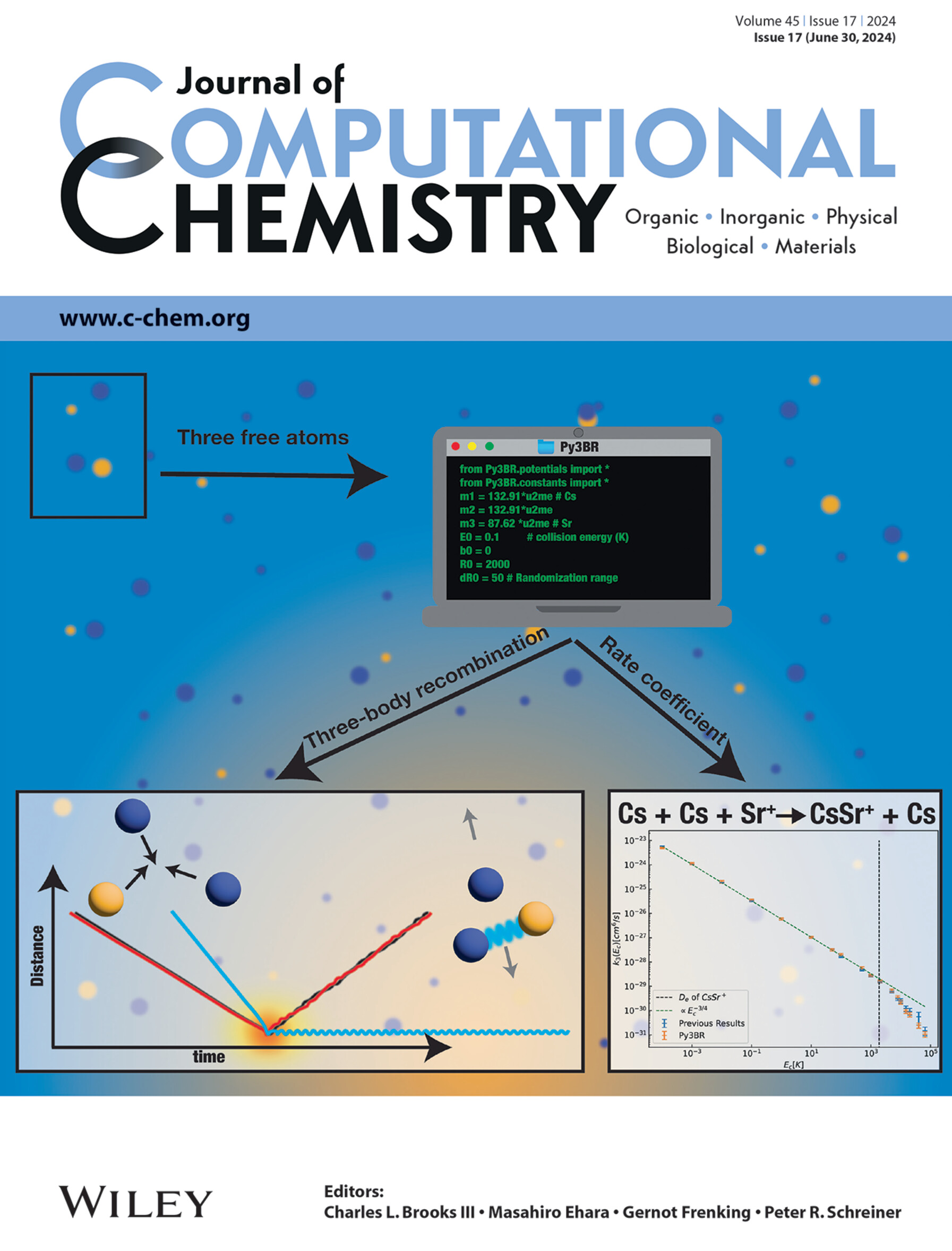
Front cover in Digital Disovery with our work Spectroscopic constants from atomic properties: a machine learning approach
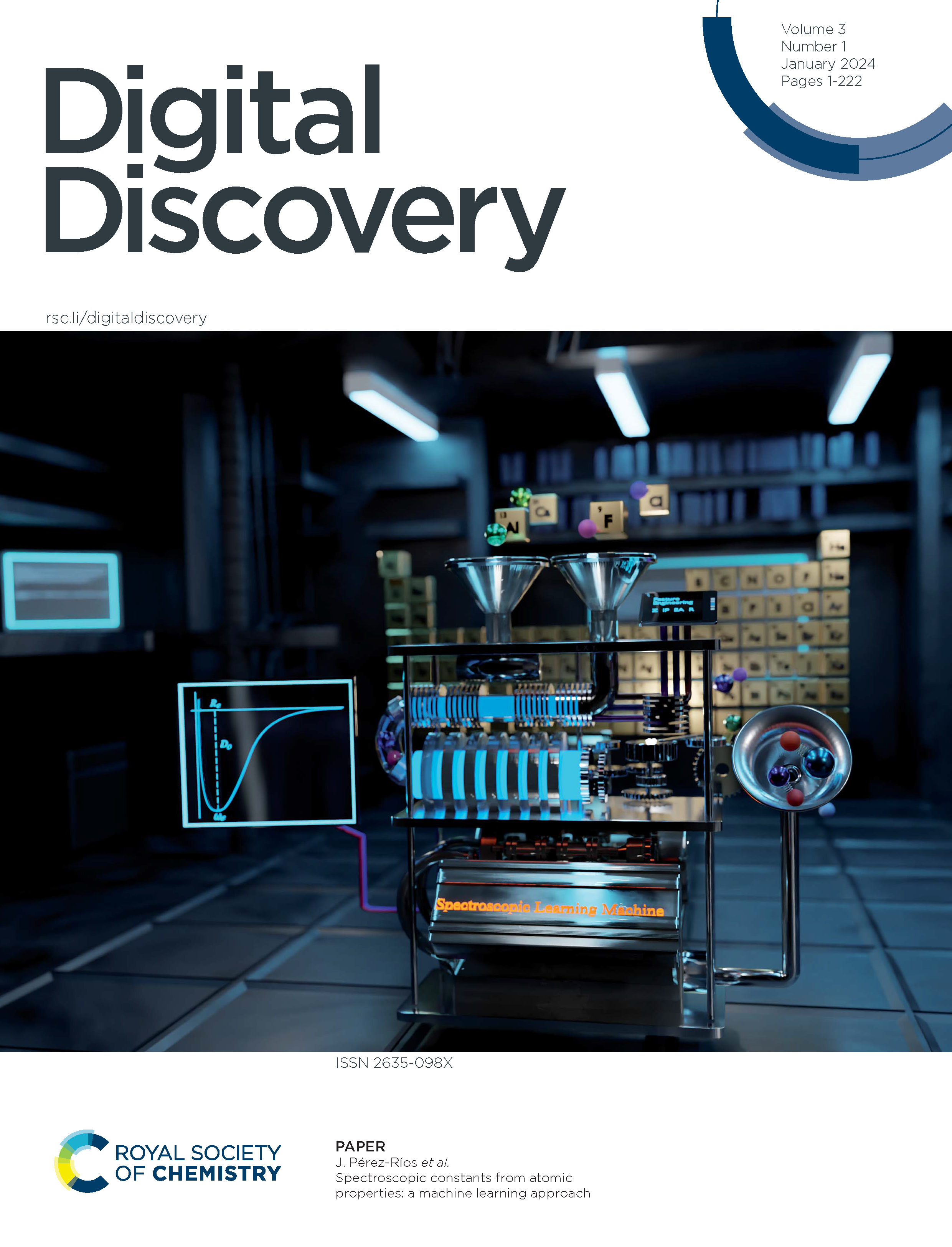
Article in Europhysics News A single ion immersed in an ultracold gas: from cold chemistry to impurity physics
 A single ion in an ultracold gas is a versatile experimental platform to study interactions
between charged and neutral particles in a controllable manner. When the gas density
is large enough, a single ion can be viewed as an impurity in a sea of ultracold atoms
or molecules. On the other hand, that single ion can also undergo a chemical reaction
with atoms or molecules in the gas. This article discusses the dynamics of a charged
impurity in an ultracold bath and the interplay between cold chemistry and impurity
physics.
A single ion in an ultracold gas is a versatile experimental platform to study interactions
between charged and neutral particles in a controllable manner. When the gas density
is large enough, a single ion can be viewed as an impurity in a sea of ultracold atoms
or molecules. On the other hand, that single ion can also undergo a chemical reaction
with atoms or molecules in the gas. This article discusses the dynamics of a charged
impurity in an ultracold bath and the interplay between cold chemistry and impurity
physics.
Review published in International Reviews of Physical Chemistry
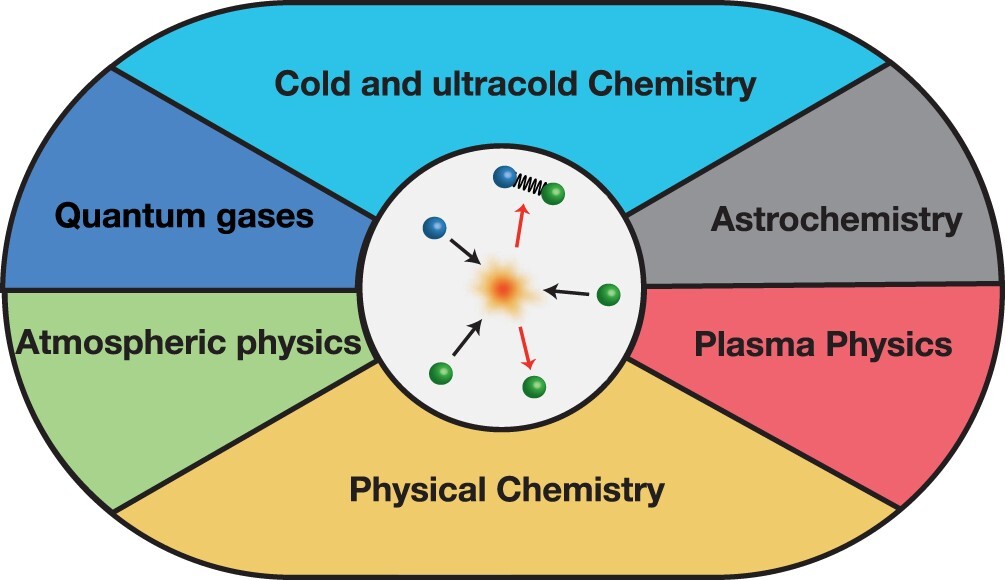 Three-body recombination, or ternary association, is an intermolecular reaction in
which three particles collide, forming a bound state between two, whereas the third escapes freely. Three-body recombination reactions play a significant role in many systems relevant to physics and
chemistry. In particular, they are relevant in cold and ultracold chemistry, quantum gases,
astrochemistry, atmospheric physics, physical chemistry, and plasma physics. As a
result, three-body recombination has been the subject of extensive work during the
last 50 years, although primarily from an experimental perspective. Indeed, a general
theory for three-body recombination remains elusive despite the available experimental
information. Our group recently developed a direct approach based on classical trajectory
calculations in hyperspherical coordinates for three-body recombination to amend this
situation, leading to a first principle explanation of ion-atom-atom and atom-atom-atom
three-body recombination processes. This review aims to summarise our findings on
three-body recombination reactions and identify the remaining challenges in the field.
Three-body recombination, or ternary association, is an intermolecular reaction in
which three particles collide, forming a bound state between two, whereas the third escapes freely. Three-body recombination reactions play a significant role in many systems relevant to physics and
chemistry. In particular, they are relevant in cold and ultracold chemistry, quantum gases,
astrochemistry, atmospheric physics, physical chemistry, and plasma physics. As a
result, three-body recombination has been the subject of extensive work during the
last 50 years, although primarily from an experimental perspective. Indeed, a general
theory for three-body recombination remains elusive despite the available experimental
information. Our group recently developed a direct approach based on classical trajectory
calculations in hyperspherical coordinates for three-body recombination to amend this
situation, leading to a first principle explanation of ion-atom-atom and atom-atom-atom
three-body recombination processes. This review aims to summarise our findings on
three-body recombination reactions and identify the remaining challenges in the field.
Our work was selected as part of the 2022 Journal of Chemical Physics Emerging Investigator Collection
Our chief finding is that the dissociation energy of the molecular ion product acts as a threshold energy, separating the low- and high-energy regimes. In the low-energy regime, the long-range tail of the three-body potential dictates the fate of the reaction and the main reaction product. On the contrary, in the high-energy regime, the short-range of atom–atom and atom-ion interaction potential dominates the dynamics, enhancing molecular formation.
Our review published in Physics Reports
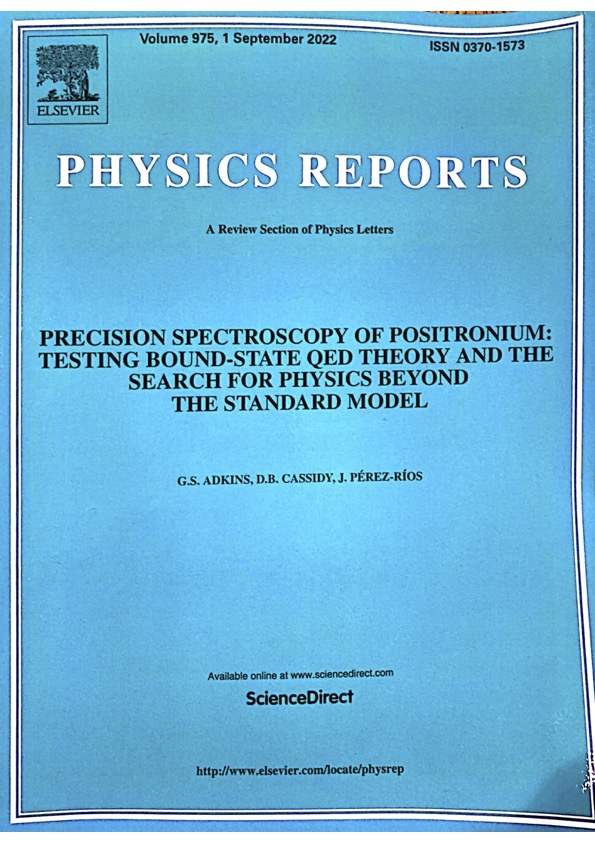
Our work as editors' suggestion in Phys. Rev. Lett
Observation of Chemical Reactions between a Trapped Ion and Ultracold Feshbach Dimers

Some other links:
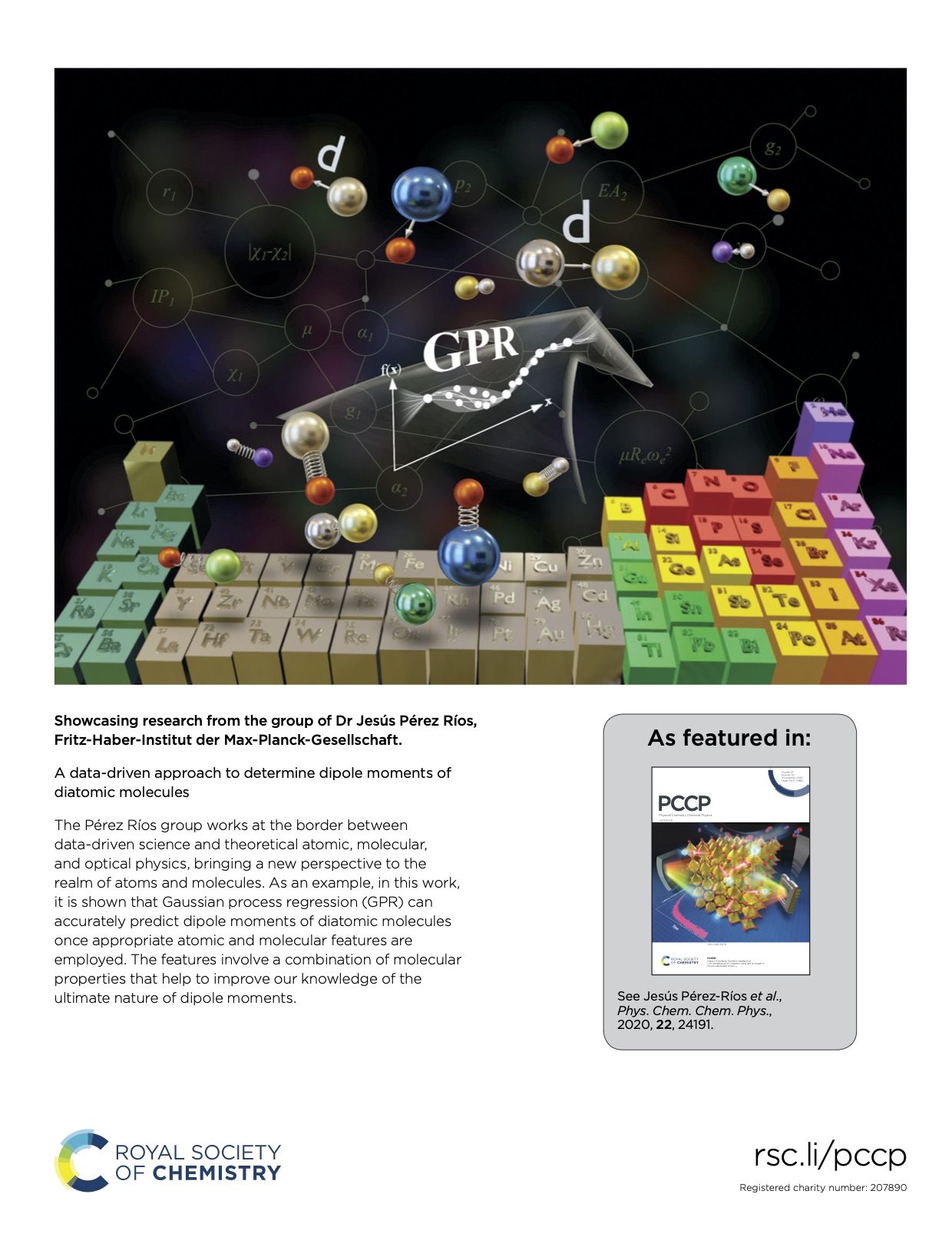
Our work highlighted in PCCP
Our work entitled "A data-driven approach to determine dipole moments of diatomic molecules" selected as a back cover in PCCP.
Theoretical atomic, molecular and optical physics on the cloud
Cloud computing is emerging as a robust, efficient, and affordable computational solution to address complex problems for the scientific community. One of the benefits of cloud computing is the possibility of deploying virtual clusters with different architectures within minutes to meet the requirements of different applications and workflows. Another benefit is running your computation immediately once it is needed, without waiting on a queue for a shared compute resource. As a result, many scientists and companies worldwide are looking to use cloud computing to find solutions to their problems efficiently and cost-effectively.
Our group is pioneering the use of cloud computing resources to perform quantum chemistry calculations. We want to be synchronized with the current technology and the possibilities that this may bring us.
Interview for Journal of Physics Series: Work hard and pursue your dreams


